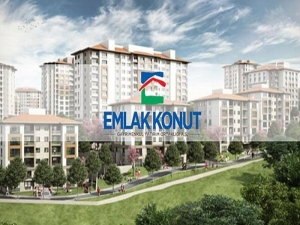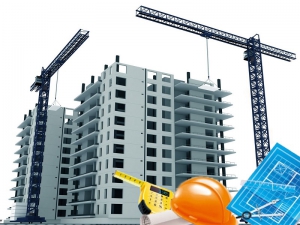
In the Manager’s Summary section, where an overall summary of the report is described, and a general reference is made to the report as well, attention is drawn to the facts that, Turkish Elevator Sector gained its pace particularly as from 1950’s, transformed structurally from a sector being sourced fully by way of import into a sector in which domestic and national production gradually increased in the fields of elevator mounting and component manufacturing, it is further stated that “It has been continuing its growth and development, thanks particularly to the increase in the demand side arisen as from the 1990’s. Although Turkish Elevator Sector’s turnover is relatively lower than that of the other sectors in general, it is still a significant field of operation in terms of the country’s industry, economy, and employment, due to the function it fulfills, causing greater masses prefer the elevator as the most widely chosen means of vertical transportation.
In parallel with the advance in the new technologies worldwide, Turkish Elevator Sector has also entered into a phase of great change, and earned substantial market shares in the world trade. Turkish Elevator Sector has to be taken into consideration directly with the urbanization, and the construction sector, which gets developed in parallel thereto. In the long view, considering such facts that the urbanization process shall go on in Turkey, and new earthquake-resistant buildings shall be constructed in place of the old ones, it seems inevitable that, the growth in Turkish Elevator Sector shall continue in parallel with the development of the construction sector. Besides, ongoing Turkish investments in the Middle East and Balkans, as well as the recently growing Turkish investments in African countries have positively affected the Elevator Sector. However, the tribulations being recently encountered in the Middle East in particular have unavoidably caused market shrinkage in the Elevator Sector. As the multinational companies, which dominate the world market, have begun transferring their manufacturing plants to the Asian countries with cheaper labor force, competitive power of the national companies seems to weaken.
This situation is considered as a critical risk from the point of view of both the users, and the development of the national Elevator Sector as well. However, the achievements and the business volumes Turkey has succeeded, thanks to its location, make the growth of the national Elevator Sector inevitable, despite the presence of the multinational companies with more than a century-long expertise and history, and its relatively inexpert background as well. The most significant factor that has made such growth happen is the productivity achieved by the elevator component manufacturers in their productions. In the meantime, innovations and R&D activities shall also play important roles within the future perspective of the sector.” Under the title where the Sector’s Status in the World Economy is compared with its Status in the EU Countries, while it is indicated that, Turkish national regulations’ harmonization with the EU technical regulations throughout the Customs Union process has positively increased the sector’s export opportunities within the scope of the “Free Movement of Goods” principle, it is further stated that, “Since it is not limited with EU countries, such an increase has given rise to worldwide trust, and consequently demand towards Turkish products. The Elevator Directive No.2014/33/EU, having been adopted by EU Commission, and published on EU Official Gazette as of March 2014, has been harmonized as it is, and inserted within our regulations as Elevator Regulation (2014/33/AB). The Elevator Regulation (2014/33/AB), which determines not only the essential health and safety requirements that have to be fulfilled by the elevators and the safety components thereof, but also the conditions that are required for the placement of these products on the market, was published on the Issue No.29757 of the Official Gazette, dated 29/06/2016. Besides, following the insertion of EU technical regulations within Turkish Regulations, and adoption of the international standards as “Turkish Standards”, the harmonized standards included within EN 81 family have further been adopted as Turkish Standards. Within this framework, TS EN 81 - 20 and TS EN 81 - 50 standards, which have been adopted by EU Standard Preparation Committee (CEN), and harmonized and published by Turkish Standards Institute, have become applicable as of 01/09/2017. TS EN 81-1 +A3 and TS EN 81-2 +A3 standards have become obsolete as of the same date. At this point, the sector’s adaptation to this transition process in terms of regulations and standards by way of displaying the required sensitivity shall become more of an issue for both its competitive powers, and its access to new markets as well.
Out of the total number of 101,254 elevators having undergone periodic control throughout 2012, 75,190 (74%) thereof were affixed with red labels, and 12,062 (12%) thereof with yellow labels, while those affixed with green labels amounted to 14,002 (14%). Out of the total number of 152,278 elevators having undergone periodic control throughout 2013, 96,542 (64%) thereof were affixed with red labels, and 11,407 (7%) thereof with yellow labels, while those affixed with green labels amounted to 44,329 (29%). Out of the total number of 167,325 elevators having undergone periodic control throughout 2014, 92,743 (55%) thereof were affixed with red labels, and 9,893 (7%) thereof with yellow labels, while those affixed with green labels amounted to 44,329 (29%). Out of the total number of 203,231 elevators having undergone periodic control throughout 2015, 117,993 (58%) thereof were affixed with red labels, 7,856 (4%) thereof were affixed with yellow labels, and 8,289 (4%) thereof with blue labels, while those affixed with green labels amounted to 70,043 (34%). Out of the total number of 301,533 elevators having undergone periodic control throughout 2016, 189,539 (63%) thereof were affixed with red labels, 8,813 (3%) thereof with yellow labels, and 36,458 (12%) thereof with yellow labels, while those affixed with green labels amounted to 66,723 (22%). Out of the total number of 369,073 elevators having undergone periodic control throughout 2017, 196,803 (53%) thereof were affixed with red labels, 11,338 (3%) thereof with yellow labels, and 77,037 (21%) thereof with yellow labels, while those affixed with green labels amounted to 83,895 (23%). In view of the results attained from the periodic controls conducted on the elevators in the years 2012, 2013, 2014, 2015, 2016, and 2017, it is seen that a significant increase has been achieved in the number of both the elevators controlled, and in the number of those affixed with green labels. The criteria being applicable to the operation and maintenance of the elevators have been specified by virtue of the Regulation on the Operation, Maintenance, and Periodical Control of the Elevators, having been published on the Issue No.29396 of the Official Gazette, dated 24/06/2015. Methods and principles regarding the periodical control of the elevators, and those regarding the authorization, obligations, and supervision of the A-type inspection institutions to take charge in the periodical elevator controls have been specified by virtue of the Regulation on the Periodical Elevator Controls, having been published on the Issue No.30411 of the Official Gazette, dated 04/05/2018. Methods and principles regarding the documentation of the inspection personnel (nominees) to be commissioned at the A-type inspection institutions being authorized by the Ministry have been specified by virtue of the Communique on the Documentation of the Inspection Personnel to conduct Periodical Elevator Controls (SGM: 2016/18), having been published on the Issue No.29788 of the Official Gazette, dated 01/08/2016. The inspection personnel, who lack the certificate required by the Periodical Elevator Control Regulation, or those holding expired certificates may not be commissioned by an A-type inspection institution in periodical controls. Turkish companies have begun to be seen operating also in the fields of mounting, and complete (package) elevator sales abroad in the recent years.
Furthermore, there is a substantial increase being witnessed in the number of our companies conducting elevator mounting operations in the Turkic Republics, Central Asia, and in the EU counties as well. The growth in the foreign trade, particularly in that with African countries, brings along the increase in Turkish elevator companies’ investments in these countries. The countries, which import elevator components from Turkey, are predominantly from EU, Middle East, and Turkic Republics. Besides, conduct of component exports from Far East to South America reveals a substantial competitive power in this field. However, it may be observed that, component imports intensify on products of Far East-origin. Particular increase in the use of products of Far East-origin in our country has given rise to the negative attitude towards our products being manufactured within the frame of European norms. That is why the individual appeals of our companies that achieved success in their exports to abroad, thanks to their brand values, to the Directorate-General of Imports of the Ministry of Economy for the implementation of anti-damping measures towards such import products, so as to secure their positions in the market, have become an issue of major importance for the future of the sector. In the meantime, the partnerships having been established with the multinational companies have brought along a substantial increase in the investments being made in our country in this field. Today, the majority of the companies operating in Turkish Elevator Industry have reached the capability of conducting exports to numerous regions worldwide. Both the domestic housing demand, and the potential to grow correspondingly, as well as the advantages being gained thanks to the geographical location of our country, altogether escalate the importance of Turkish Elevator Sector.” In the section where the number of the workplaces, and the employment ratios of the sector are stated, it is indicated that, there are a total number of 2,988 elevator mounting, and elevator component manufacturing companies that operate in the sector with industrial registration records, as being required by the “Industrial Registration Law” No.6948, and is further stated that “ Besides, the number of the elevator mounting, and elevator component manufacturing companies that issue annual operating performance statements is 2,337. In view of the operating performance statements being submitted by the elevator mounting companies to our Ministry within the scope of the industrial registration applications, it is seen that, there are a total number of 37,270 persons being employed in the sector, with the administrative personnel included. The number of the companies having been granted with service competence certificate (SCC) by the Turkish Standards Institute in accordance with the Regulation on the Operation, Maintenance, and Periodical Control of the Elevators is 2,438.
Elevator Sector is of a sectoral structure that provides high level of domestic employment. Any and all of the operations being conducted by the Elevator Sector may be considered as constituting an important field of business that makes room for regional labor as a solution for the problem of employment, which is of critical importance nowadays. Elevators, unlike other industrial products, such as refrigerators, televisions, automobiles, are such products, which are mounted on-site, and generally by persons who are living in the same region/vicinity, and which have to undergo periodical maintenance and control mandatorily. Besides, while the multi-storey buildings provide a critical solution for the housing problem, solving the said problem with this solution depends on the success of the elevators, and that of the Elevator Sector as well. Elevator Sector may therefore be deemed as a strategic sector. Apart from the production activities within the sector, accompanying maintenance and repair works also bring about a great employment potential. The periodical maintenance being stipulated as a legal obligation under the respective legislation, as well as the annual controls, which have to be undergone mandatorily by the elevators for their safe operation, alone offer employment opportunities for great number of persons.” Another critical statement was made under the title, where the turnover of the sector is discussed. In view of the import and export figures of the year 2017, the following statistics were revealed in the report, where the foreign trade volume for the year 2017 was said to amount to a total of $ 383 millions: “In consideration of its field of operation, Turkish Elevator Sector seems to possess a turnover amounting to around $ 1-1.5 billion dollars in an overall view of the number of annual mountings, respective documentation services, periodical control services, component production, and maintenance/repair services per the number of buildings being constructed in the meantime.”
Mentioning of the substantial developments having occurred in the foreign trade volume of the sector, following statements were respectively made: “Following the as it is harmonization with the union acquis, a substantial market field has been opened for the Elevator Sector in Europe, and the foreign trade volume in this field has constantly increased in the recent years. Production of elevator parts and components is the strongest field in the Elevator Sector that has foreign trade surplus for long years. While this field possesses a critical position in balancing the elevator import/export, the respective foreign trade figures for the year 2017 prove this consideration. The foreign trade surplus achieved by $ 8 million in this field may be admitted as the most significant indicator of this consideration.” Speaking of the production index of the sector, the followings were uttered as the final statements: “While around 570,000 elevators have been mounted, and put into operation in Turkey up to now, most of them, which are classified as new and old, are still in operation today.
In consideration of the mounting of new elevators within the scope of the operations of the Elevator Sector, the number of the elevators newly mounted revealed a constant increase until 2008, and despite the downward trend in the same figure as from 2009 as a consequence of the global crisis, it has resumed its upward trend in the years 2013, 2014, 2015, 2016, and 2017. Following the implementation of the urban transformation process, and as a consequence of the study being conducted by our Ministry on “Increasing the Safety Levels of the Elevators in Operation”, having been mandatorily implemented throughout 2015, substantial developments are likely to happen, particularly in the component production. What is to be critical in this respect shall be the proper management of a self-sufficient sectoral program throughout the “Increasing the Safety Levels of the Elevators in Operation” project, without being dependent to outsourcing, and importing. Bearing the burden laid on it under this circumstance, success is considered as inevitable for Turkish Elevator Sector, thanks to its current capacity and experience.”



